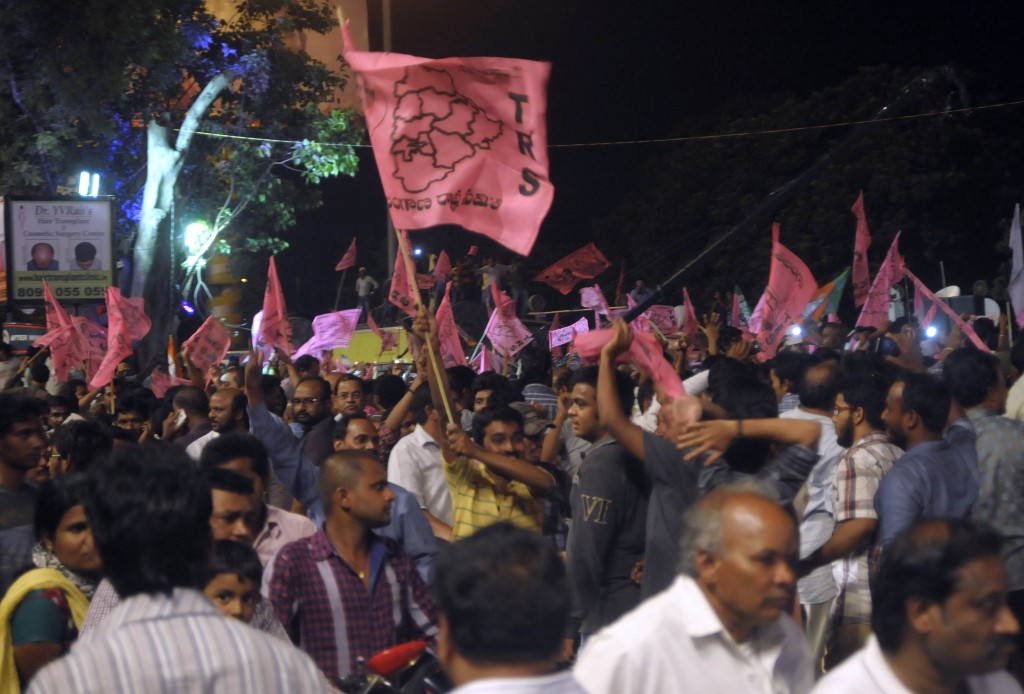The Unknown Prisoners of Guantanamo (Part Two)
by Andy Worthington
 As I explained in the first part of this five-part series, one of the great publicity coups in WikiLeaks’ recent release of classified military documents relating to the majority of the 779 prisoners held at Guantánamo was to shine a light on the stories of the first 201 prisoners to be freed from the prison between its opening, in January 2002, and September 2004, when 35 prisoners were repatriated to Pakistan, and 11 were repatriated to Afghanistan.
As I explained in the first part of this five-part series, one of the great publicity coups in WikiLeaks’ recent release of classified military documents relating to the majority of the 779 prisoners held at Guantánamo was to shine a light on the stories of the first 201 prisoners to be freed from the prison between its opening, in January 2002, and September 2004, when 35 prisoners were repatriated to Pakistan, and 11 were repatriated to Afghanistan.
As I also explained, a handful of these 46 prisoners were cleared for release as a result of the Combatant Status Review Tribunals, a one-sided process, which ran from August 2004 to March 2005 and was designed to rubber-stamp the prisoners’ prior designation as “enemy combatants,” who could continue to be held indefinitely. Information about the 558 prisoners who passed through the CSRT process (PDF) was first made publicly available in 2006, but no records have ever been publicly released by the US government which provide any information whatsoever about the 201 released, or approved for release before the CSRTs began, except for a prisoner list released in May 2006 (PDF), which contains the names, nationalities, and, where known, dates of birth and places of birth for 759 prisoners (all but the 20 who arrived at Guantánamo between September 2006 and March 2008).
In the years since the documents relating to the CSRTs were released (and information relating to their annual follow-ups, the Administrative Review Boards, or ARBs), I attempted to track down the stories of these 201 men, and managed, largely through successful research that led to relevant media reports, interviews and reports compiled by NGOs, to discover information about 112 of these prisoners, but nothing at all was known about 89 others (except for their names, and, in some cases, their date of birth and place of birth). With the release of the WikiLeaks files, all but three of these 89 stories have emerged for the very first time, and in this series of articles, I will run through these stories.The first 17 stories were in Part One, and the second 17 are below.
Please note that the overwhelming majority of these 86 prisoners were Afghans or Pakistanis, and that many were assessed by the US military as “being neither affiliated with Al-Qaida nor a Taliban leader,” of having “no intelligence value to the United States,” and of posing “a low threat to the US, its interests or its allies.” That last reference — to them posing “a low threat” — ought to alert readers to the problems with the classification system at Guantánamo, as many of the cases involve patently innocent people seized by mistake, who, nevertheless, were referred to as “a low threat” rather than as no threat at all.
On their return, the majority of the Afghans were released outright, whereas the Pakistanis were mostly imprisoned for many months before they too were granted their freedom (see here for an article from Pakistani newspaper the Nation in June 2005 describing the release of 17 prisoners repatriated from Guantánamo in September 2004, some of whom are listed below).
Haseeb Ayub (ISN 141, Pakistan) Released September 2004
Born in 1975 and described, in his assessment dated August 9, 2003, as Hassib Ayub, he apparently “stated that he traveled to Afghanistan for the purpose of joining the Jihad against the Northern Alliance and subsequently joined a Taliban unit in Kabul,” which moved onto Kunduz just two weeks before the city fell — in November 2001. As a result, he “claimed to have never seen combat,” but, instead, “provided medical assistance to injured Taliban fighters and performed menial chores at a makeshift hospital in Kunduz.” He was then captured by the Northern Alliance and — presumably after a short time in the custody of the Northern Alliance, probably in the prison at Sheberghan, and very possibly after surviving what is known as the “convoy of death” — was “transferred on to US forces at Bagam.”
It was also stated, as a reason for his transfer to Guantánamo on 17 January 2002, that he was transferred “because of his affiliation with the Taliban as a foreign fighter,” but, as I explained in a recent article, How to Read WikiLeaks’ Guantánamo Files (originally published on WikiLeaks’ website when the Guantánamo files were first published, as part of my work liaising between WikiLeaks and its media partners):
[T]he “Reasons for Transfer” included in the documents, which have been repeatedly cited by media outlets as an explanation of why the prisoners were transferred to Guantánamo, are, in fact, lies that were grafted onto the prisoners’ files after their arrival at Guantánamo. This is because, contrary to the impression given in the files, no significant screening process took place before the prisoners’ transfer. As a senior interrogator who worked in Afghanistan explained in a book that he wrote about his experiences, every prisoner who ended up in US custody had to be sent to Guantánamo, even though the majority were not even seized by US forces, but were seized by their Afghan and Pakistani allies at a time when substantial bounty payments for “al-Qaeda and Taliban suspects” were widespread. Although the assessment of Ayub included a claim that he was “an admitted member” of the Pakistani “extremist group” Harkat Jihad Islami (actually, Harakat-ul-Jihad-al-Islami), and included the suggestion (as with other Pakistanis) that he might be able to provide further information in Pakistani custody, the commander of Guantánamo at the time of his assessment, Maj. Gen. Geoffrey Miller, recommended that he “be considered for transfer to the control of another government for continued detention,” on the basis that he was “of low intelligence value to the United States,” and “a medium threat risk,” because of “his dedication to extremism and his possible desire to continue the Jihad.”
Muhammed Kashif Khan (ISN 146, Pakistan) Released July 2003
Khan, born in 1979 and also described as Mohammed Kashef Khan, worked, according to his own account, as “both an aide and an Urdu interpreter in a hospital in Kunduz,” and was “captured on approximately 7 December 2001 while helping transport patients from Kunduz to Mazar-e-Sharif” (in other words, a fortnight after the Taliban surrendered). When it came to justifying his transfer to Guantánamo, it was claimed that he was transferred “based on his knowledge of the Kunduz Hospital.”
In its assessment, on September 27, 2002, the Joint Task Force also stated that it “consider[ed] the information obtained from and about him as not valuable or tactically exploitable,” and added, “Based on current information, detainee [146] is assessed as not affiliated with Al-Qaida nor as being a Taliban leader. Moreover … the detainee has no further intelligence value to the United States and will not be seen for further intelligence purposes. [He] has not expressed thoughts of violence nor made threats toward the US or its allies during interrogations or in the course of his detention. Based on the above, detainee does not pose a future threat to the US or US interests.” It was also noted, “During a visit to Guantánamo Bay, Cuba, from 3 to 10 August 2002, Pakistani Intelligence officers interrogated [Khan] and concluded that he had little or no intelligence value. They stated that their government would accept custody of [him] if released by the US government.”
Most alarmingly, an additional reason for approving his repatriation from Guantánamo was because he “has an infectious disease (Hepatitis C) that is not causing active medical problems at this time, but poses a threat to other detainees and health care professionals.”
Mohammed Arshad Raza (ISN 147, Pakistan) Released September 2004
Born in 1981, Raza apparently stated (according to his assessment on August 15, 2003) that he was a member of Tabliqi-e-Jama’at (Jamaat al-Tablighi), elsewhere described as “an Al-Qaida supported Islamic fundamentalist organization based in Pakistan, and who operates several terrorist training camps in the Kashmir region.” It was also stated that Jamaat al-Tablighi “actively recruited [him] under the pretense of spreading Islam, but was in fact recruiting fighters to support the Taliban regime,” even though Jamaat al-Tablighi is actually a huge and entirely legitimate missionary organization, with millions of members worldwide.
He also stated that his “superior” had “sent him and six others to Kunduz, Afghanistan to preach at various mosques.” Apparently warned to flee as the Northern Alliance advanced, he said that he fled on his own, but was captured in Chardera by the Northern Alliance, and then spent 35 days in Sheberghan before being transferred to the custody of US forces, arriving in Guantánamo on January 17, 2002. It was claimed that he was transferred because of “his knowledge of recruitment practices by Jaish-e-Muhammad (JEM) members in PK [a militant organization not mentioned by name elsewhere in his assessment] and information on prison conditions in Kunduz” — as though the latter was an adequate reason for detention and interrogation.
Because he was “not considered truthful,” and “change]d] his story frequently,” and because of his alleged admission that he had trained at the Balakot training camp in Kashmir, which involves meeting “certain criteria including a particular extremist views [sic] and a dedication to martyrdom,” Raza was regarded as being “of minimal intelligence value,” but as “a high threat to the US, its interests and allies,” and Maj. Gen. Miller recommended him for continued detention. As a result, he was not freed for another 13 months, until the authorities disposed of a large number of the remaining Pakistanis in September 2004.
Faik Iqbal (ISN 210, Pakistan) Released July 2003
Born in 1982, Iqbal was assessed on December 14, 2002, when it was stated that he had “volunteered to join the Taliban in the fight against the Northern Alliance in Afghanistan, after listening to speeches by local religious leaders in Karachi, Pakistan,” and had served with a Pakistani Taliban unit from October 15 to November 28, 2001. Two days later, according to the US account, he “and a thousand other soldiers were en route to Mazar-e-Sharif to surrender, when they were captured by General Dostum’s forces.” He then spent 38 days in Sheberghan — presumably after surviving the “convoy of death”” — and was then transferred to US custody, arriving in Guantánamo on January 20, 2002. When it came to justifying his transfer to Guantánamo, it was stated that it was “based on his possible knowledge of a Taliban surface-to-air missile, and a night vision device that he saw in Afghanistan” — disturbingly thin reasons, which had obviously arisen through interrogations in US custody in Afghanistan, and which reveal the extent which the supposed intelligence gathering process involved clutching at straws of information, however tenuous, from the largely random selection of individuals who ended up in US custody, rather than anything more focused, targeted or directed.
In its assessment, the Joint Task Force stated that it “consider[ed] the information obtained from and about him as not valuable or tactically exploitable,” and added, “Based on current information, detainee [210] is assessed as not affiliated with Al-Qaida nor as being a Taliban leader. Moreover … the detainee has no further intelligence value to the United States and will not be seen for further intelligence purposes. [He] has not expressed thoughts of violence nor made threats toward the US or its allies during interrogations or in the course of his detention. Based on the above, detainee does not pose a future threat to the US or US interests.” As a result, he was recommended for transfer.
Kay Fiyatullah (ISN 247, Pakistan) Released September 2004
Born in August 1983, and described in his assessment dated August 30, 2003 as Kifiat Ullah, he told his interrogators that, in October 2001, he had met a man named Ali Shah in his local bazaar, and, a month later, was taken “sightseeing” by Shah and three other men — to Peshawar, where he was told that they were going to Afghanistan, and where he “went along with them because he was outnumbered and in a strange city.” In Kabul, he said, his companions told him they were “going to fight Jihad and if [he] didn’t want to then he needed to go to Kunduz.” From Kunduz, he said that he traveled to another place, Dasht-e-Archi, where he heard that there were other Pakistanis, and where he “stayed in a Pakistani house with approximately 50 other men.” He then said that he was “injured by a grenade while walking to the market with 40 unknown people,” and was then taken in by an Uzbek named Gulbai, who held him for a month before turning him over to Northern Alliance commander Latif Ullah, who handed him on to US forces. He arrived in Guantánamo on June 12, 2002.
In its assessment, JTF-GTMO cast serious doubt on his story, concluding that, although he was “assessed as not being a member of Al-Qaida, nor a Taliban leader,” he was “still of intelligence value and his commitment to Jihad makes him a threat.” He was then described as being “of moderate intelligence value to the United States,” and as “a medium threat,” and it was recommended that he be “considered for transfer to the control of another government for continued detention” — something that happened 13 months later.
Zahid Sultan (ISN 300, Pakistan) Released September 2004
Born in 1982, and described, in his assessment on September 20, 2003, as having “a personality disorder,” albeit one with “a fair prognosis of recovery,” he told his interrogators that, after attending a pro-Taliban rally in late September 2001, he joined a Taliban unit in Kabul, and then traveled to the front lines in Kunduz, where he was “captured by the Northern Alliance in mid-November 2001.” In his interrogations, he “claimed he was often afraid and began to doubt what the Taliban had been telling people,” and also “claimed he often wanted to run away but he was trapped and could not escape.”
Although JTF-GTMO concluded that he was “of no intelligence value to the United States,” he was regarded as “a medium threat,” essentially because he “admits to being an Islamic fundamentalist [who] decided to fight against the US for what he perceived as an attack on a pro-Islamic government and to defend Islam itself,” and also because, “Although [he] was a coward, by his own admission, during his internment [he] has again become defiant and aggressive towards the US.” In conclusion, Maj. Gen. Miller recommended that he “be considered for transfer to the control of another government for continued detention.”
Mohammed Ijaz (ISN 302, Pakistan) Released September 2004
Born in 1974, and described, in his assessment on September 20, 2003, as Ijaz Ahmad, he told his interrogators that he listened to a Taliban recruiter at his local mosque, who was “encouraging attendees to come fight with and support the Taliban, to help fellow Muslims in Afghanistan,” and that, as a result, he “volunteered that evening,” and was then taken to the Afghan border area by motorbike, taken into Afghanistan by another man, and put on a bus to Khost, where he lived in a “mud house,” which he believed to be a Taliban guest-house, with 18 other people. He was then moved to Kabul for 12-14 days, and was finally moved to “a small town about three hours from Kunduz, which appeared to be populated solely by Taliban fighters,” where, he said, he spent three days performing guard duty before being captured after fleeing his guard post because “it became apparent tat the Northern Alliance was going to overrun the area.” He was flown to Guantanamo on February 11, 2002.
As with Zahid Sultan, although JTF-GTMO concluded that he was “of no intelligence value to the United States,” he was regarded as “a medium threat,” essentially because, although he “admits he made a mistake and does not want to repeat his mistakes,” he “still firmly believes in his reasons for taking up Jihad against the US,” and “has participated in Jihad and shown himself vulnerable to recruitment by extremist groups.” In conclusion, Maj. Gen. Miller recommended that he “be considered for transfer to the control of another government for continued detention.” Despite this, the Criminal Investigative task Force (CITF) “stated that they required more investigation before completing a risk assessment on the detainee” — and he was not released for another year.
Ali Ahmed (ISN 303, Pakistan) Released July 2003
Born in 1982, Ahmed was assessed on October 29, 2002, when it was stated that , after hearing a speech by an imam, urging people to “join the Jihad in Afghanistan against the Northern Alliance because it was the obligation of every Muslim,” and with additional pressure from a friend, Ali Khan, he traveled to Afghanistan in October 2001 to join the Taliban. After receiving basic weapons training north of Kabul, which consisted of “firing only three or four rounds” on an AK-47, Northern Alliance troops “attacked [his] position and everyone fled to Kunduz,” where Ahmed was captured soon after, and transferred to US custody on January 4, 2002, arriving in Guantánamo on February 20, 2002. As a reason for transfer, it was stated that he was transferred “based on his possible knowledge on [sic] travel routes into Afghanistan from Pakistan.”
In its assessment, the Joint Task Force stated that it “consider[ed] the information obtained from and about him as not valuable or tactically exploitable,” and added, “Based on current information, detainee [303] is assessed as not affiliated with Al-Qaida nor as being a Taliban leader. Moreover … the detainee has no further intelligence value to the United States and will not be seen for further intelligence purposes. [He] has not expressed thoughts of violence nor made threats toward the US or its allies during interrogations or in the course of his detention. Based on the above, detainee does not pose a future threat to the US or US interests.” It was also noted, “During a visit to Guantánamo Bay, Cuba, from 3 to 10 August 2002, Pakistani Intelligence officers interrogated [Ahmed] and concluded that he had little or no intelligence value. They stated that their government would accept custody of [him] if released by the US government.” As a result, Maj. Gen. Michael Dunlavey, the commander of Guantánamo at the time of Ahmed’s review, recommended that he be “considered for release or transfer to the control of another government.”
Ezat Khan (ISN 314, Afghanistan) Released March 2003 Born in 1966, Khan was assessed on January 11, 2003, when it was stated that he lived in a village in Nangarhar province (next to the Pakistani border) and that he “supported his family by cutting and selling wood from near his home at the local bazaar.” In 1999, when the Taliban introduced “oppressive taxes,” he moved with his family to Wacha Dara, Pakistan, where he found work “as a sharecropper for Taj Mohammed, a Pakistani, who offered [him] a place to stay and a patch of land to plant and harvest wheat and corn.” On or around December 16, 2001, he visited his home village “to celebrate Eid with his parents and attend his uncle’s funeral,” but four days later, as he attempted to cross the border, he was arrested “on suspicion of being associated with three Arabs who had been arrested previously at the same border crossing.” Although the Pakistani officials apparently “planned to release him after they spoke to their supervisor at the police station,” he ended up, based on this flimsiest of reasons for arrest, being “taken to Quetta and questioned by US personnel … taken to an unknown jail and then subsequently transferred to US forces in Kandahar on 5 January 2002,” arriving in Guantánamo on June 22, 2002. As a reason for transfer (one of those reasons that were grafted on afterwards), it was stated that he was transferred “because of his knowledge of a covert route of travel through the mountains south of Jalalabad, Afghanistan to Parachinar, Pakistan.”
In its assessment, the Joint Task Force stated that it “consider[ed] the information obtained from and about him as not valuable or tactically exploitable,” and added, “Based on current information, detainee [314] is assessed as not affiliated with Al-Qaida nor as being a Taliban leader. Moreover … the detainee has no further intelligence value to the United States and will not be seen for further intelligence purposes. [He] has not expressed thoughts of violence nor made threats toward the US or its allies during interrogations or in the course of his detention. Based on the above, detainee does not pose a future threat to the US or US interests.” As a result, Maj. Gen. Geoffrey Miller recommended that he be “considered for release or transfer to the control of another government.”
Yarass Ali Must (ISN 315, Afghanistan) Released March 2003
Born in 1972, Must was assessed on February 8, 2003, when it was stated that, on December 30, 2001, he “walked from his farm in Parachinar province, Pakistan to visit and ensure the well-being of his three paternal uncles in Nasir, Afghanistan.” On the way back, however, he was “stopped at a Pakistani military checkpoint and arrested when he could not provide identification and paperwork authorizing his travel.” Held in Parachinar jail for a month, he was then transferred to US forces (on a basis at least as flimsy as that of Ezat Khan, above), and was sent to Guantánamo on June 20, 2002, with the reason, added afterwards, being “his knowledge of routes between Afghanistan and Pakistan in the vicinity of Parachinar, Pakistan.”
In its assessment, as with Ezat Khan, the Joint Task Force stated that it “consider[ed] the information obtained from and about him as not valuable or tactically exploitable,” and added, “Based on current information, detainee [315] is assessed as not affiliated with Al-Qaida nor as being a Taliban leader. Moreover … the detainee has no further intelligence value to the United States and will not be seen for further intelligence purposes. [He] has not expressed thoughts of violence nor made threats toward the US or its allies during interrogations or in the course of his detention. Based on the above, detainee does not pose a future threat to the US or US interests.” As a result, Maj. Gen. Geoffrey Miller recommended that he be “considered for release or transfer to the control of another government.”
Ghuladkhan (ISN 316, Afghanistan) Released July 2003
Born in 1972, Khan left his village in Afghanistan on January 5, 2002 and crossed the border into Pakistan with an uncle and a friend, hoping “to find work digging irrigation ditches.” All three men were, however, arrested after crossing the Pakistani border. it is not known what happened to his companions, but Ghuladkhan was transferred to US control before the end of January 2002, and was sent to Guantánamo on June 15, 2002. Without even pretending that he was sent to Guantánamo for some spurious reason that was grafted on afterwards, his assessment, dated March 22, 2003, stated bluntly, “Detainee has no information of intelligence value.”
In its assessment, as with Ezat Khan and Yarass Ali Must, the Joint Task Force stated that it “consider[ed] the information obtained from and about him as not valuable or tactically exploitable,” and added, “Based on current information, detainee [316] is assessed as not affiliated with Al-Qaida nor as being a Taliban leader. Moreover … the detainee has no further intelligence value to the United States and will not be seen for further intelligence purposes. [He] has not expressed thoughts of violence nor made threats toward the US or its allies during interrogations or in the course of his detention. Based on the above, detainee does not pose a future threat to the US or US interests.” As a result, Maj. Gen. Geoffrey Miller recommended that he be “considered for release or transfer to the control of another government.”
Mohammadullah (ISN 347, Afghanistan) Released July 2003 Born in 1972 and described as Mohmed Allah inhis assessment of September 27, 2002, it was stated that he “went to the Chinese Hospital in Kandahar to have a medical procedure performed on his mother. Upon exiting the hospital to go purchase medicine, armed robbers took 3 million Afghanis from him and stole his automobile.” Soldiers described as “Irregular Afghanistan troops” then seized him and turned him over — or sold him — to US forces, who sent him to Guantánamo on June 15, 2002. In a feeble attempt to justify his transfer, it was stated that he was transferred “because he was a Mullah, who led prayers at Manu Mosque, Kandahar province, prior to his detention, which placed him in a position to have special knowledge of the Taliban and access to Taliban leaders.”
In its assessment, as with Ezat Khan, Yarass Ali Must and Ghuladkhan, the Joint Task Force stated that it “consider[ed] the information obtained from and about him as not valuable or tactically exploitable,” and added, “Based on current information, detainee [347] is assessed as not affiliated with Al-Qaida nor as being a Taliban leader. Moreover … the detainee has no further intelligence value to the United States and will not be seen for further intelligence purposes. [He] has not expressed thoughts of violence nor made threats toward the US or its allies during interrogations or in the course of his detention. Based on the above, detainee does not pose a future threat to the US or US interests.” As a result, Maj. Gen. Geoffrey Miller recommended that he be “considered for release or transfer to the control of another government.”
Abdullah Ghofoor (ISN 351, Afghanistan) Released March 2004
Born “sometime between 1969 and 1971,” and diagnosed with “a Depressive Disorder,” as well as the “latent tuberculosis” that surfaces in many of these reports, Ghofoor, described as Abdullah Ghopoor or Abdul Ghapoor, told his interrogators, according to his assessment on August 23, 2003, that he was conscripted by the Taliban 15 days before Ramadan in 2001, after 12 to 15 Taliban members had come to his house to recruit his father, but he had offered himself in his father’s place. He added that, when he told the Taliban that he “had experience driving a truck,” he “was informed he would be a driver.” He was then taken to a house outside Kunduz, where there were four other Taliban members or conscripts, including one, Abdul Rahman, identified as a Guantánamo prisoner (ISN 357), and where he and the others remained for 20 days until they were told that they had to surrender to General Dostum’s forces. He was sent to Guantánamo on June 8, 2002, purportedly on the basis of “his knowledge of Taliban operations in and around Kunduz just prior to the surrender of Taliban forces in November 2001 and the treatment of prisoners while in custody of Dostum’s forces and while in Sheberghan prison prior to his transfer to US custody.”
In analysing Ghofoor’s story, JTF-GTMO regarded him as evasive, and also claimed that his pocket litter — primarily, a selection of business cards with handwritten notes — was “not typical pocket litter for someone who was merely a farmer, then conscripted to be a driver, [who] did not actually fulfil the role as driver before turning himself in to Northern Alliance forces,” although it was also conceded that “The actual pocket litter cannot be found and therefore the detainee has not been questioned on it.” As a result, although he was “assessed as not being a member of Al-Qaida nor a Taliban leader,” and was described as being “of minimal intelligence value to the United States,” it was also stated that, because of his perceived lack of truthfulness, he posed ” a medium threat to the US, its interests or its allies.” Following the Criminal Investigative Task Force’s approval of his transfer under “a conditional release agreement” on July 4, 2003, Maj. Gen, Miller recommended that he “be considered for transfer to the control of another government for continued detention.”
Note: In a fact sheet entitled, “Former Guantánamo Detainee Terrorism Trends,” compiled on April 7, 2009 (PDF), he was listed as a former Guantánamo prisoner suspected of “reengaging in terrorist activities,” and described as “Taliban commander; planning attacks on US and Afghan forces; killed in a raid by Afghan security forces.”
Abdul Hadi Sayed (ISN 352, Afghanistan) Released November 2003
Born in 1973 and described as having been “diagnosed with Chronic Hepatitis B and latent Tuberculosis for which he refuses treatment,” Sayed told his interrogators, according to his assessment dated August 23, 2003, that the Taliban conscripted him as a cook in October 2001, and assigned him to a house in Takhar, “near the front lines in Kunduz, where approximately 15-20 Taliban fighters were staying at any given time.” After six weeks, he was apparently “given the choice to either go home or turn himself in [sic] the Northern Alliance,” and he “chose to go home, [but] was captured in the process.” He was sent to Guantánamo on June 8, 2002, on the spurious basis of “his knowledge of Taliban operations that took place in the Kunduz area.”
Despite doubts that he was “captured with a Pakistani identification card in another name, several business cards from an international travel agency in Dubai, UAE, a magnetic telephone and address book belonging to another individual, as well as various other names and phone numbers,” which “seemed highly suspicious for a farmer who was conscripted to be a cook,” interrogations about these items “produced no actionable intelligence,” and as a result, having also been “assessed as being neither affiliated with Al-Qaida nor a Taliban leader,” it was stated that he was “of low intelligence value to the United States,” and was also “a low threat to the US, its interests or its allies,” Maj. Gen, Miller recommended that he “be considered for transfer to the control of another government for continued detention,” following the Criminal Investigative Task Force’s approval of his transfer under “a conditional release agreement” on July 4, 2003.
Abdul Waheed (ISN 353, Afghanistan) Released July 2003
Born in 1972, Waheed was assessed on February 1, 2003 as a reluctant Taliban conscript. He told his interrogators that, after he heard rumors that the Taliban were planning to conscript people from his village in Helmand province, he fled to his uncle’s in another village, but returned and was conscripted when his father was arrested, and he was informed that he “would not be released until detainee served the obligatory three-month conscription.” Conscripted in October 2001, he was then sent to Kunduz, via Kandahar and Kabul, ending up in a “storage area,” which “contained large gas cans, blankets, and linen,” where he “performed nightly guard duty for one hour,” and “carried a Kalashnikov while on guard duty,” and, during the day, “performed menial tasks such as food preparation or gathering firewood.” As Kunduz fell, he joined thousands of others in the desert at Yanghareq, to the north west of Kunduz,, and “departed the following day for Sheberghan.” On the way, as part of the “convoy of death,” he was “placed into a shipping container in which the majority of the occupants perished during the night.” He was sent to Guantánamo on or around June 19, 2002, “because of his general knowledge of Taliban personalities and dispositions in the Kunduz area,” according to the reasons that were grafted on afterwards.
In its assessment, the Joint Task Force stated that it “consider[ed] the information obtained from and about him as not valuable or tactically exploitable,” and added, “Based on current information, detainee [353] is assessed as being neither affiliated with Al-Qaida nor a Taliban leader. Moreover … the detainee has no further intelligence value to the United States and will not be seen for further intelligence purposes. [He] has not expressed thoughts of violence nor made threats toward the US or its allies during interrogations or in the course of his detention. Based on the above, detainee does not pose a future threat to the US or US interests.” As a result, Maj. Gen. Geoffrey Miller recommended that he be “considered for transfer or release to the control of another government.”
Nabu Abdul Ghani (ISN 354, Afghanistan) Released November 2003
Born in 1952, and described, in his assessment on December 5, 2002 as suffering from “latent tuberculosis, chronic hepatitis B, and positive cardiac risk factor,” he apparently left his home on approximately October 20, 2001, and traveled to Kunduz in search of his eldest son, Abdul Qahar Ghani, “whom he feared had either joined or been conscripted by the Taliban.” In Kunduz, however, he “discovered that his son was not part of the Taliban draftees from his village,” but was trapped because of the Northern Alliance advance. Taken to Sheberghan (presumably on the “convoy of death”), where he spent 45 days, he was then transferred to US control in Kandahar, and was sent to Guantánamo on or about June 13, 2002, “because of his general knowledge of Taliban personnel located in Kunduz, and those who were held in Sheberghan.”
In its assessment, the Joint Task Force stated that it “consider[ed] the information obtained from and about him as not valuable or tactically exploitable,” and added, “Based on current information, detainee [354] is assessed as not affiliated with Al-Qaida or as being a Taliban leader. Moreover … the detainee has no further intelligence value to the United States and will not be seen for further intelligence purposes. [He] has not expressed thoughts of violence nor made threats toward the US or its allies during interrogations or in the course of his detention. Based on the above, detainee does not pose a future threat to the US or US interests.” As a result, Maj. Gen. Geoffrey Miller recommended that he be “considered for transfer or release to the control of another government.”
Nassir Malang (ISN 355, Afghanistan) Released March 2003
Born in 1972, and described, in his assessment on December 5, 2002 as Malang Nassir, he was apparently conscripted by the Taliban on September 29, 2001, and sent to Taloqan, in northern Afghanistan, where he “was forced to work in service-support, which for the most part consisted of driving food supplies to various Taliban locations in the area.” After surrendering at Kunduz and being imprisoned by the Northern Alliance (presumably after also surviving the “convoy of death”), he was transferred to US control in January 2002, and arrived in Guantanamo on June 11, 2002, where, according to the spurious reasons given for transferring the prisoners, he was transferred “because of his general knowledge of Taliban logistics and personalities.”
In its assessment, the Joint Task Force stated that it “consider[ed] the information obtained from and about him as not valuable or tactically exploitable,” and added, “Based on current information, detainee [355] is assessed as not affiliated with Al-Qaida nor as a Taliban leader. Moreover … the detainee has no further intelligence value to the United States and will not be seen for further intelligence purposes. [He] has not expressed thoughts of violence nor made threats toward the US or its allies during interrogations or in the course of his detention. Based on the above, detainee does not pose a future threat to the US or US interests.” As a result, Maj. Gen. Geoffrey Miller recommended that he be “considered for transfer or release to the control of another government.”
First Published on Cageprisoners


































